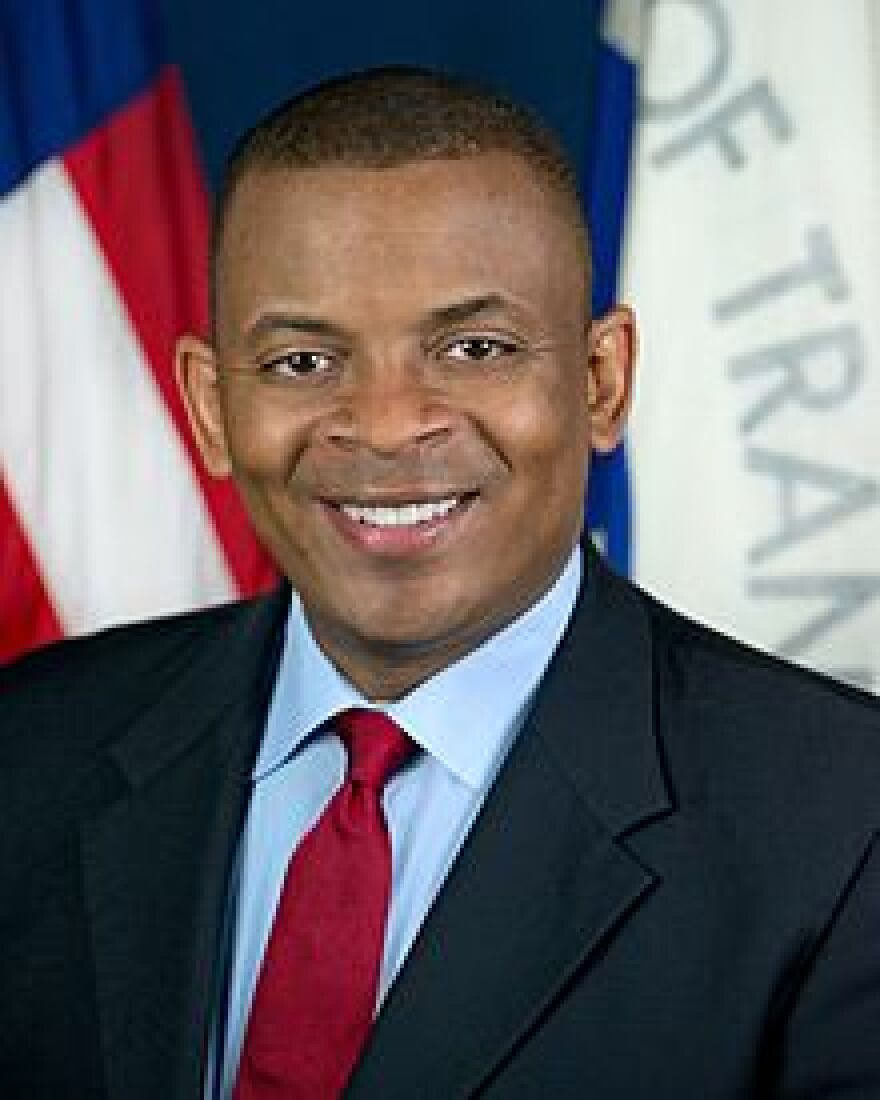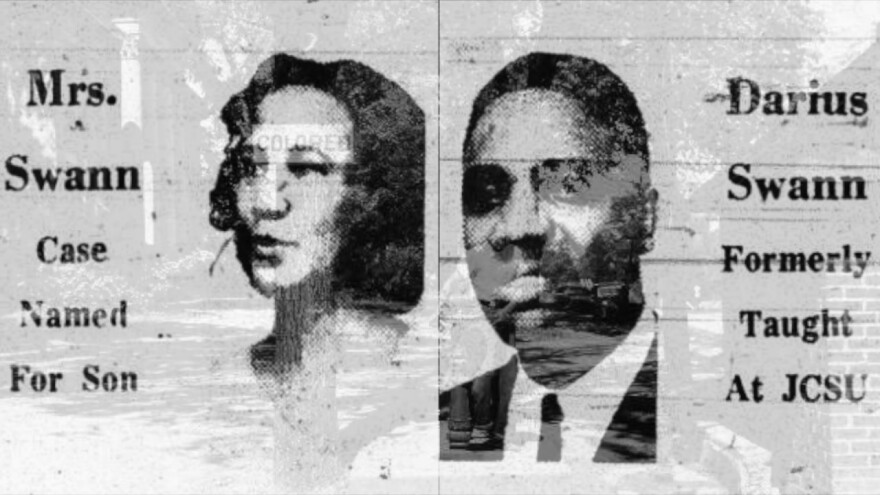Fifty years ago, the United States Supreme Court handed down a ruling in Swann v. the Charlotte-Mecklenburg Board of Education that would shape the city’s public education system, its civic culture and its national image. The order to desegregate schools, using busing if necessary, turned Charlotte into a symbol of successful integration.
Decades later, everything changed. But the people shaped by desegregation carry the legacy with them.
The Swann ruling came on April 20, 1971. Anthony Foxx was born 10 days later. He recalls growing up in the shadow of West Charlotte High School, which would become a national symbol of the desegregation Swann demanded.

Foxx would eventually be mayor of Charlotte and transportation secretary for President Obama. As a child, he’d hear stories about the school from his mother, who graduated in the 1960s, and other family members. They took pride in West Charlotte alumni who went on to succeed in business, education and sports.
"You’d also hear stories about Martin Luther King Jr. giving the commencement speech in 1963, so it was a pillar of the Black community," said Foxx, who now lives in Washington, D.C., and is an executive with Lyft.
By the 1960s, CMS shouldn’t have had Black and white schools. The Brown v. Board of Education Supreme Court ruling that was supposed to have ended “separate but equal” schools came in 1954, more than a decade before Darius and Vera Swann sued CMS on behalf of their 6-year-old son. But like so many Southern school districts, CMS was dragging its feet — letting a few Black students into white schools but doing little to change the basic structure.
The Swann ruling said that was no longer an option. The school board had fought all the way to the nation’s top court, but once the change couldn’t be avoided, some of Charlotte’s prominent white citizens helped create a plan to desegregate in earnest.
A Rare Twist For A Black School
The late C.D. Spangler, a banker who served on the school board in the 1970s, worked on the plan that would send students from some of the city’s most affluent white neighborhoods to West Charlotte High. His daughter, Anna Spangler Nelson, was a child at the time.
"That’s a vivid memory for me — the pressure that was being put on him by certain detractors, including crank phone calls and death threats," recalls Nelson, who works with the C.D. Spangler Foundation.
The most common pattern, in Charlotte and elsewhere, was for Black students to be bused into white schools for desegregation.
Foxx says the fact that West Charlotte High remained open and welcomed white students was unusual: "Most Black schools were closed."
Even more striking: It maintained its Black culture as a racially mixed school.
"The band would march differently than the previously all-white schools," Foxx said. "They would sort of break down and dance during halftime, and the white kids had to learn the dances just like the Black kids had to learn the dances."
Choosing Public Schools
Joe and Joan Martin brought their three young children to Charlotte a couple of years after the Swann ruling. Joe Martin, a white bank executive, would eventually be known for his work trying to build racial trust in Charlotte. But at the time, Joan Martin says, they were just die-hard public school advocates who didn’t question sending their kids to CMS.

Their oldest, Joe B. Martin, remembers Black children being bused into Eastover Elementary in the affluent Charlotte neighborhood where the Martins lived. Now senior pastor at Charlotte’s Sardis Presbyterian Church, Martin says he "just presumed that every other neighborhood in the world looked like the one I grew up in because it was the one I’d seen."
But when he got to West Charlotte High in the early ‘80s, he not only learned what it was like to attend school in a Black neighborhood but to be welcomed there. Some former classmates went to private schools rather than attend West Charlotte, but the white students who came were excited, he says.
"West Charlotte High School didn’t need to be desegregated to be a great school. It already was," Martin said. "What happened was we got to be part of a great school that wouldn’t have been an option to us before desegregation and busing."
A Golden Era And Its End
By that time CMS and West Charlotte had a national reputation for making desegregation work. When Boston went through turmoil over busing in 1974, West Charlotte students invited a handful of students to come South for a look at integration in action.
"Every year we were there it seemed like there was some major news outlet doing a documentary or a story or something on West Charlotte," Martin said.
Adults who attended West Charlotte in the 1970s and ‘80s often describe it as a golden era when lifelong friendships were forged and racial harmony seemed within reach. Anthony Foxx became good friends with Joe B. Martin’s younger sister, Elizabeth Martin. Their mom, Joan Martin, spoke when Foxx launched his campaign for mayor.
"The people that I attended West Charlotte with are friends of mine for life because we shared an experience that, unfortunately, is too unusual in our society, where we’re on an equal plane and we live together in close settings," Foxx said.
But the community changed. Newcomers streamed in who wanted neighborhood schools and knew nothing about Swann and its aftermath. Explosive suburban growth and increasing traffic made busing more burdensome.
In the late 1990s, several white parents sued to end court-ordered desegregation and race-based assignment. After a long legal battle they prevailed, and the current system of neighborhood schools combined with magnets emerged. Some CMS schools remain diverse, but many returned to predominantly Black or white student bodies.
For years now, more than half the Black and Hispanic students in CMS have attended schools that are less than 10% white. West Charlotte High is 80% Black and less than 2% white, with about 200 Hispanic and Asian students. National media outlets now report on CMS as a symbol of resegregation.
Things Might Have Been Better
Foxx notes that integrated schools had to fight a lot of inertia.
"We have many more years, many more decades, many more centuries, as a culture, of division than we do of unity," he said.
Nelson, who graduated from West Charlotte in 1980, acknowledges the past is sometimes painted in overly rosy tones. Accounts from the time tell of angry parents, flight to private schools and racial fights that disrupted schools.
"It was not easy. It was not perfect," Nelson says. "It was complicated. It was real-world."
But she, Foxx and Martin all say things might be better today if the experiment launched by the Swann ruling had endured. Martin’s career as a minister took him out of state for 30 years, and he was dismayed when he returned.
"My experience then would have led me to believe that by the time we got to 2018 there wouldn’t be so many barriers between communities and so many problems still existing," he said, "that we would have been a lot farther down the road of racial reconciliation than we were."
The buildings where they all went to school are about to be replaced by a new school on the same campus. Not long ago, the school invited alumni to come sign a beam that will be part of the new West Charlotte High. Black and white, they streamed in, so many they had to add more beams.
Martin says he signed for himself and his two siblings — and ended it with thanks to his parents for giving them the opportunity to be part of West Charlotte.



